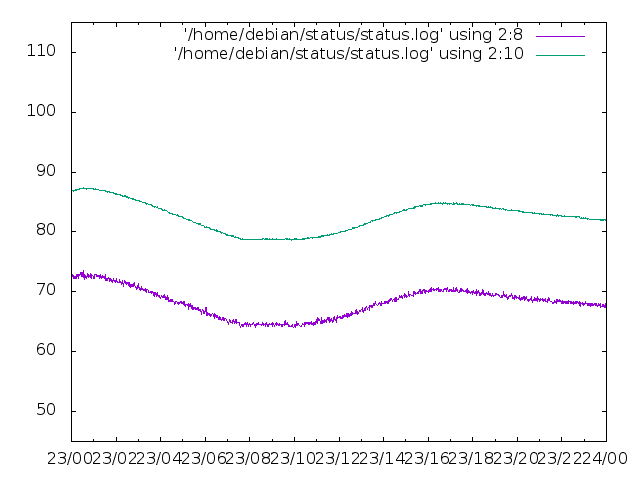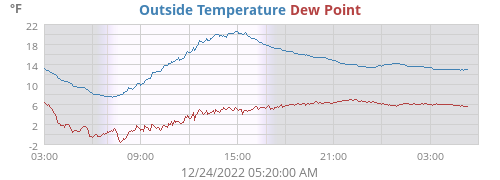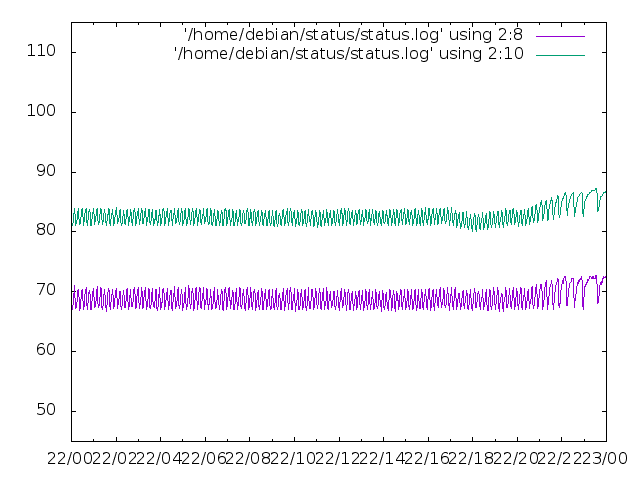[… Saturday 12/17 4.75 miles in Starkville; Tuesday 12/20: 1 mile; today’s run : 3.5 bundled-up miles]
My running is in the dumper these days, I feel a bit off and it’s been cold and wet and those are my excuses.
What I really want to tell you about is the cold. A big cold weather system moved in Thursday night. It has been coming for quite a while and there have been stories from the upper states about a big temperature drop and blizzard conditions.
We got the temp drop but so far no blizzard. On Thursday the high was at 2 pm, nearly 60 and the low was at midnight 22.3. The big plunge continued as Friday morning we hit bottom at under 10 degrees.
Friday we spent the day in the 20’s and received warnings from the electric company that rolling blackouts might be necessary…. yes, they’ve done a good job convincing everyone that all-electric houses are the way to go, so now we can have HVAC energy problems in the winter.
So much for the domestic front. The really interesting data is coming from my radio station graph. On Friday we had no cycles of the air conditioner. That’s right, the thing was completely off all day. And during the really cold periods both the internal room temperature and the transmitter exhaust temperature were falling.
Here is the radio station temperature chart for Friday (midnight to midnight). The lower purple line is the air temperature being sucked into the transmitter. The upper teal line is the transmitter exhaust temp.

And here is the weather station chart right now, which shows the temps for most of yesterday, starting with the last bit of the temp plunge (3 am Friday to ~5 am today).

The charts don’t line up with each other exactly. But, after midnight on Thursday there were no cycles of the A/C in that first chart. We would see a sharp down tick if the A/C had come on. But it is all smooth and the downward slopes are due to ambient temperature. The upward slope is due to ambient temperature combined with internal heat sources.
I‘m seeing that, below about ~20 degrees of external air temperature the internal heat sources can’t keep up with heat losses. Maybe the better way to see it is that without A/C the building’s internal sources will put the interior air temperature about 50 degrees above the exterior air temperature. And the internals of the transmitter will be 15+ degrees above that.
Here is the radio station chart for Thursday. The temperature drop-off starts around 7-8 pm. You can see the A/C comes on briefly all day: up/down/up/down in little zigzags. Then in the evening the ups get longer until a last A/C bump after 11 pm. It almost gets up enough into the 70’s in the Friday chart, around 12:30-ish but the A/C doesn’t come on and it’s been free sailing since then.
Before we built the little transmitter shed I ran this setup in a room in the house. It was under a desktop in my working office. It was warm in there (and noisy) but it wasn’t terribly hot. And in that environment the transmitter final amplifier board (the major source of heat) eventually failed. And that’s why we have the A/C set low in the transmitter shed.

I’m not sure why the A/C on/off temperatures moves around. It has always done that. The thing is a cheap window unit and they don’t seem to put much effort into the thermostatic accuracy of these things. I think the knob is set at the lowest point, something like 66. But you can see that the kick-on temp changes quite a bit. I suspect that the internal heat of the A/C pump and blower are in play somehow.
Some of the excursion of the upper, green line is because the transmitter was putting off more heat at the end of Thursday. To me that indicates a change in feed-line matching characteristics. Radio transmitters get feedback from the antenna and transmission line and a portion of that feedback is expelled in heat. Our big temperature drop was ushered in with vigorous gusty wind. So probably either the wind itself or some attending rain caused the antenna and feed line to change slightly in radio frequency acceptance.